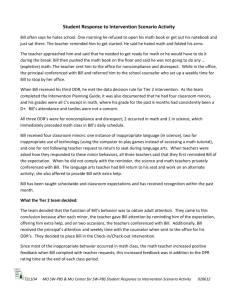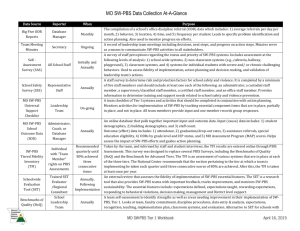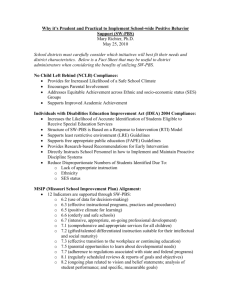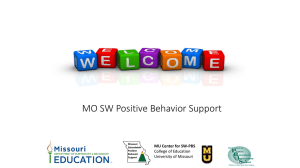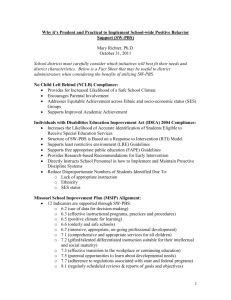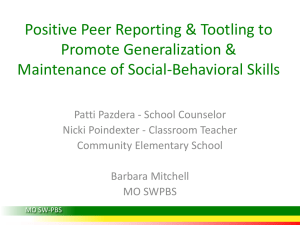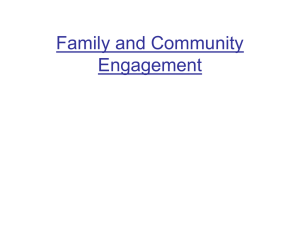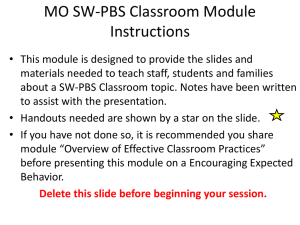8D_Peer-Observation-to-Monitor-Classroom
advertisement
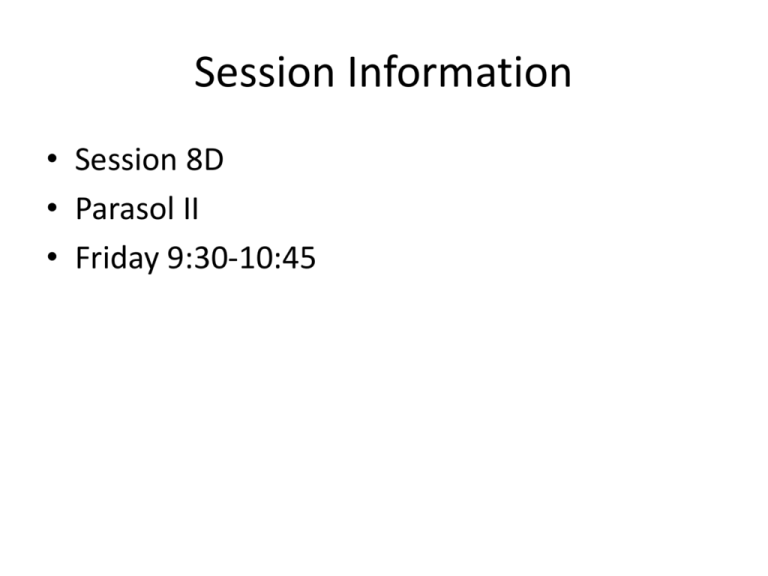
Session Information • Session 8D • Parasol II • Friday 9:30-10:45 Use of a Structured Peer Observation Process to Monitor Classroom Level PBS Implementation Jessica Schumacher – School Counselor Angela Wimmer – Instructional Coach Williamsburg Elementary North Callaway County R-1 School District Christie Lewis- School Counselor South Park Elementary, Moberly School District Danielle Starkey & Barbara S. Mitchell MO SWPBS MO SW-PBS Session Outcomes • By the end of this session participants will be able to… – Explain how classroom level PBS implementation is associated with longterm sustainability of SWPBS. – Develop a process for monitoring classroom level PBS practices in your setting. MO SW-PBS Three Levels of Implementation A Continuum of Support for All Academic Systems Behavioral Systems Tier Three Tier Three • Individual Students • Assessment-based • High Intensity • Individual Students • Assessment-based • Intense, durable procedures Tier Two • Some students (at-risk) • High efficiency • Rapid response Tier Two • Some students (at-risk) • High efficiency • Rapid response Tier One Tier One • All students • Preventive, proactive • All settings, all students • Preventive, proactive MO SW-PBS Sustainability of SWPBS • Matthews et al., 2013 – Implementation of Classroom Systems significantly predicts sustained implementation of SWPBS & student outcomes – Within Classroom Systems the strongest predictors of sustainability are: • regular acknowledgement of expected behaviors • matching instruction to student ability • access to additional support MO SW-PBS Classroom System PBS • The use positive, behavior specific feedback is a teaching practice that consistently results in improved student academic and social behavior. • However, significant evidence indicates that educators rarely use praise effectively in the classroom. (Thompson, Marchant, Anderson, Prater, & Gibb, 2012, p. 521) MO SW-PBS Classroom System PBS “Despite recommendations for increasing positive to negative statements in the classroom (e.g., 4:1), research regularly shows higher ratios of negative to positive statements for social behavior.” (Matthews et al., 2013, p. 7) MO SW-PBS Classroom System PBS • Classroom teacher access to additional support such as coaching or peer networking may be associated with sustainability IF the support is focused on improving key instructional practices. – Having clear expectations & rules – Identifying classroom routines – Providing effective feedback MO SW-PBS Peer Observation Process • Preparation – Inform staff – Set a schedule (who and when) – Provide a place to meet – Select data collection method • SCOA application for I-Pad • Paper/pencil MO SW-PBS Peer Observation Process • Part I – Introduction (10 min) – Explain Purpose • Not evaluative, opportunity to look for Classroom System PBS practices – Define Key Practices • Expectations & Rules • Routines • Feedback Statements (3 types) MO SW-PBS Types of Feedback Positive Specific • Tells student what he/she did correctly. May include a rationale and/or a tangible reinforcer. • “Great job bringing all of your materials to class. This will help you be an effective learner.” • Tells the student what he/she should do differently. Corrective Negative • “Remember part of being safe in the classroom is using materials correctly. Please keep pencils in your hands.” • Does NOT tell student what T0 DO in the same or similar situations. • “Stop” “Act like a 4th grader” “Keep Your Dear Teacher Happy” Peer Observation Process • Part II - Observe & Collect Data (15-20 min) – Occurs during an instructional period – NOT observing individual students – Expectations & rules aligned with matrix – Evidence of behavioral routines – Number and types of feedback statements teachers give to students about behavior. – Leave positive specific feedback for classroom teacher MO SW-PBS Peer Observation Process • Part III – Debrief & Discuss (10 min) – Open-ended questions, affirmations, reflections, summaries • What did you see? • How well did you think that worked? • Was there anything that surprised you? – Submit data • Building averages are totaled, no individual teacher data submitted MO SW-PBS Peer Observation Process • Follow Up – External feedback given to the Tier 1 Team – Provide a list of “strengths” and “things to consider” – Tier 1 team reviews and shares with full staff – Input from staff used to generate action plan items • Staff perception survey sent out MO SW-PBS Survey Results Survey Item “Agree” or “Strongly Agree” It was valuable to complete the observations. 27/27 = 100% I would recommend participation in the process to a colleague. 27/27 = 100% Having a SWPBS consultant facilitate the process was important. 23/27 = 85% I would choose to participate in the observation process again. MO SW-PBS 27/27 = 100% Survey Results Survey Item Participation in the observation process will positively influence my teaching practices. “Agree” or “Strongly Agree” 27/27 = 100% As a result of the observation process I have a better understanding of Classroom Level PBS practices. 25/27 = 93% If the observation process is continued in my building I would like to receive my individual data. 27/27 = 100% MO SW-PBS Survey Comments • I would like some peer coaching to take place as well where one of the PBS reps/leaders/coaches comes into my classroom and gives me some ideas right on the spot. • I thought it was very helpful to observe another teacher with a PBS expert. MO SW-PBS Survey Comments • I had mixed feelings on the observation processes. It was helpful to focus on only the PBS aspects of the lesson. I would have liked to see them observe a class that was a little more "difficult" with some potential tier 2 candidates because I would like to see some of the practices in action. • This would be more useful if we observed once a quarter as a "reminder" instead of at the end of the year. MO SW-PBS Support for Classroom Level PBS Implementation External Coaching • • • • • Schedule Introduce Observe Debrief & Discuss Feedback MO SW-PBS Internal Coaching • Booster training sessions • Goal setting • On-going data collection & monitoring • Individualized feedback • Peer coaching • Increased implementation • Improved student outcomes Implementation Example • Jessica Schumacher – School Counselor • Angela Wimmer – Instructional Coach Williamsburg Elementary, North Callaway County R-1 School District MO SW-PBS Implementation Example • Christie Lewis – School Counselor South Park Elementary, Moberly School District MO SW-PBS MO SW-PBS
